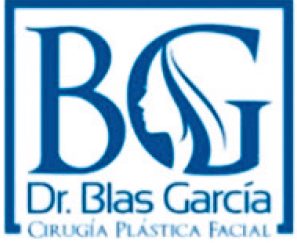
SANTA CRUZ DE TENERIFE, 6 May. (EUROPE PRESS) –
The group of Canary Islands Drawing teachers has prepared a manifesto in which it warns of the “progressive disappearance” of artistic studies in the archipelago, both in Compulsory Secondary Education (ESO) and in artistic and humanities high schools. as well as in the Teaching Centers for Adult People.
The teachers maintain that this is the intention of the Canarian Executive, according to the draft of the educational curriculum in which teaching hours are reduced to artistic subjects and go from being common for all students to being optional, which highlights the “null importance” that the Ministry of Education gives to artistic education in its new plans.
Thus, in relation to artistic education in ESO, visual and audiovisual plastic education ceases to be a core or common subject for all students and is relegated to optionality and the subject ‘Communicative and Creative Practices’ disappears, being lost Thus, a whole year of training in which two hours a week were dedicated to artistic practices, taught jointly by the Language and Music teachers in the first year of ESO, and by the Language and Drawing teachers in the second year.
The Drawing teachers emphasize that these subjects make it possible to link artistic creation with the emotional component, which has made it possible for students to learn to communicate through
arts and to integrate creative thinking in all aspects of their intellectual activity, including, among others, scientific or technological.
“MINIMUM” AMOUNT OF HOURS
Now, if the change towards optional training is completed, they denounce that students will arrive at Baccalaureate studies having completed only one year of Plastic, Visual and Audiovisual Education, with a “tiny” number of hours in all of ESO, with the ” detriment” that this supposes for their possibilities of success in the artistic or scientific baccalaureate.
Likewise, they state that Royal Decree 217/2022 creates a new subject called ‘Monographic Work’ but artistic specialties have not been taken into account.
For this reason, they point out, “we propose the creation of a subject in which technology and drawing are related, which would serve as a training base for future studies in architecture, graphic design or industrial design”.
As for Baccalaureate studies, the situation “is also alarming”, they comment, since in Arts the presence and relative weight of the subjects Audiovisual Culture and Artistic Foundations, compulsory and with two courses of duration, have been significantly reduced, which they would be taught optionally and only for one year.
In the same way, they indicate that in the Humanities Baccalaureate the elimination of ‘Artistic Drawing’ is proposed in its two years of study and ‘Audiovisual Culture’ is degraded, by not including it among the evaluable subjects of the Baccalaureate for Access to the University (EBAU).
Regarding Basic Education for Adults, taught in adult centers (CEPA), they point out that “it is also greatly affected” since the artistic content of plastic expression and music is eliminated from the social sphere, so that students You will be absolutely deprived of receiving training in these aspects.
CHECK THE CURRICULUM WITH THE PROFESSORS
Drawing teachers understand that when designing the new curricula, the Ministry of Education “should consult the teachers” who will teach artistic education in ESO, in high school and in adult education, “since they are the true experts in the matter and have been and continue to be willing to contribute their knowledge and experience for the benefit of educational quality”.
Along these lines, they point out that “marginalizing” artistic studies is a “clear setback” reminiscent of the teachings of the last century where only written expression and mathematics were encouraged since, in the current labor market, and even more so in the of the future, it will be required to know how to work in a team, be creative and use divergent and autonomous thinking, all of which are skills that are developed through artistic education “more than any other”.
Likewise, in the case of adults, artistic education contributes to promoting their mental balance, reducing absenteeism and strengthening their self-esteem.
However, they consider it “essential” that the Ministry of Education adopt an “avant-garde vision” in the educational field by applying point 8 of the LOMLOE, which indicates as one of the ten challenges of the Spanish educational system “increase STEAM vocations especially in girls –Science, Technology, Engineering, ARTS, Maths–“, thus avoiding “perpetuating the hierarchy of disciplines
and knowledge” and in the line of grouping the fields of knowledge in a single area including and promoting the presence of the arts in the curriculum of all teaching.















